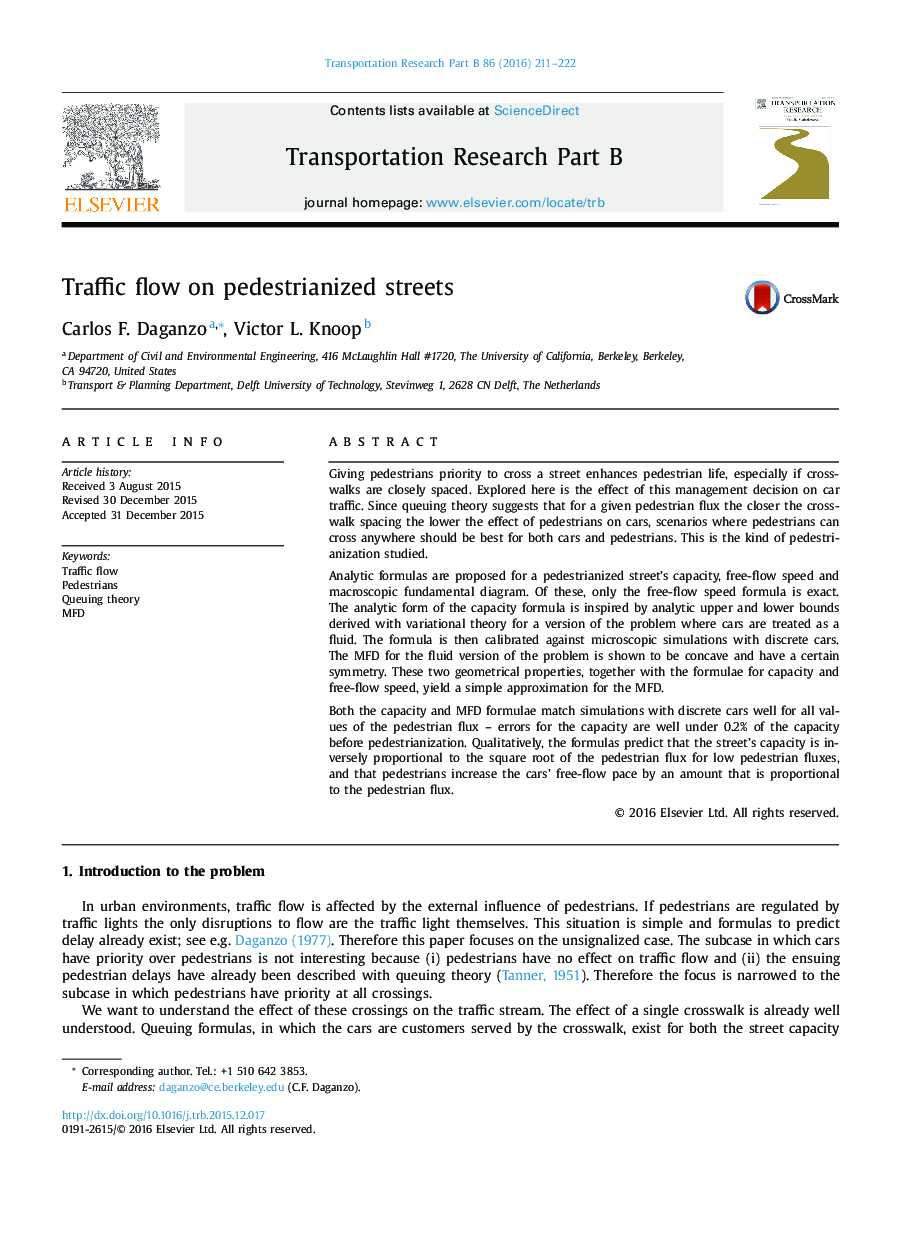| Article ID | Journal | Published Year | Pages | File Type |
|---|---|---|---|---|
| 1131578 | Transportation Research Part B: Methodological | 2016 | 12 Pages |
•Analytic formulas predict the capacity and MFD of a street with ubiquitous pedestrian-priority crossings.•Simulations match formulas with a tolerance of a few percent.•Free-flow speed declines proportionately with the pedestrian flow.•Capacity declines by an amount proportional to the square root of the pedestrian flow.
Giving pedestrians priority to cross a street enhances pedestrian life, especially if crosswalks are closely spaced. Explored here is the effect of this management decision on car traffic. Since queuing theory suggests that for a given pedestrian flux the closer the crosswalk spacing the lower the effect of pedestrians on cars, scenarios where pedestrians can cross anywhere should be best for both cars and pedestrians. This is the kind of pedestrianization studied.Analytic formulas are proposed for a pedestrianized street’s capacity, free-flow speed and macroscopic fundamental diagram. Of these, only the free-flow speed formula is exact. The analytic form of the capacity formula is inspired by analytic upper and lower bounds derived with variational theory for a version of the problem where cars are treated as a fluid. The formula is then calibrated against microscopic simulations with discrete cars. The MFD for the fluid version of the problem is shown to be concave and have a certain symmetry. These two geometrical properties, together with the formulae for capacity and free-flow speed, yield a simple approximation for the MFD.Both the capacity and MFD formulae match simulations with discrete cars well for all values of the pedestrian flux – errors for the capacity are well under 0.2% of the capacity before pedestrianization. Qualitatively, the formulas predict that the street’s capacity is inversely proportional to the square root of the pedestrian flux for low pedestrian fluxes, and that pedestrians increase the cars’ free-flow pace by an amount that is proportional to the pedestrian flux.
